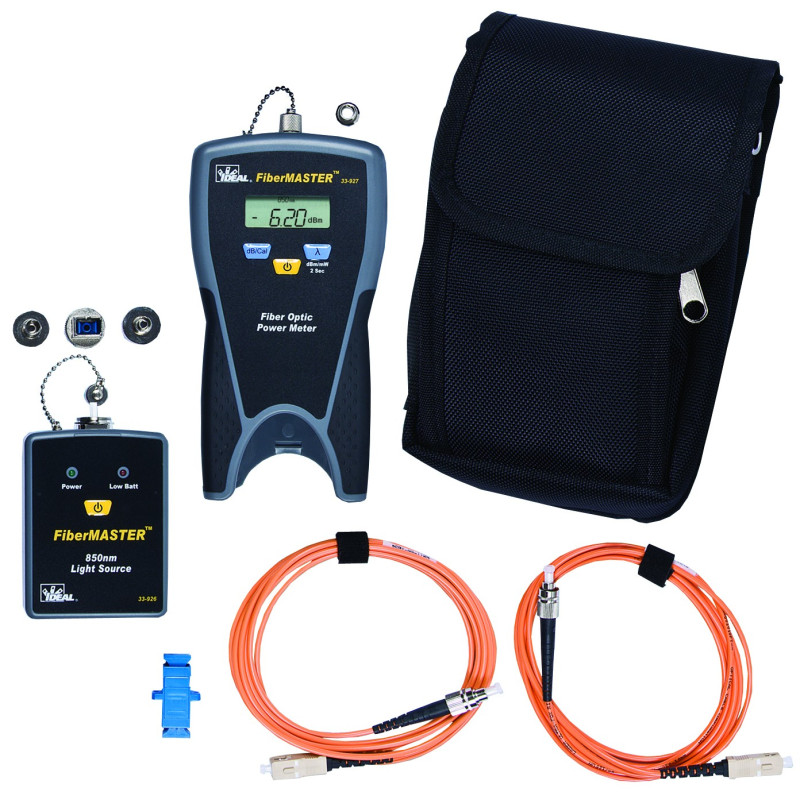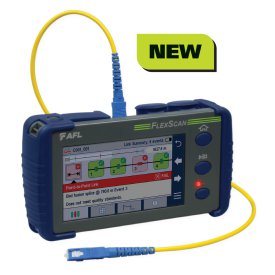A step-by-step guide for using fibre testing equipment effectively
Checking out the Influence of Robotic Vision on Modern Production Techniques and Quality Assurance
Robotic vision modern technology is transforming the landscape of modern manufacturing and high quality control. By incorporating sophisticated imaging systems and man-made knowledge, manufacturers can accomplish extraordinary degrees of accuracy and performance. This change not just maximizes manufacturing procedures but also addresses essential challenges in preserving product requirements. As sectors increasingly rely upon these technologies, the effects for future manufacturing practices continue to be to be completely discovered. What will this imply for the affordable characteristics of the market?
Understanding Robotic Vision Technology
Robotic vision innovation works as the backbone of automation in contemporary manufacturing. It includes using cameras, sensing units, and expert system to allow robots to analyze and reply to aesthetic information from their atmosphere. This innovation allows robots to determine, situate, and assess things, making them qualified of performing intricate tasks such as setting up, inspection, and material handling with accuracy. The combination of equipment understanding formulas additionally enhances the capability of robotic vision systems, allowing them to adapt to varying conditions and enhance gradually. By refining pictures and data in real-time, robotic vision systems can assist in quicker decision-making and decrease errors in making procedures (optical measurement system). This innovation not just enhances operational performance but also assures that quality criteria are fulfilled consistently. As the production landscape remains to progress, comprehending the complexities of robot vision technology becomes necessary for leveraging its possible completely
Advantages of Robotic Vision in Production
Robotic vision innovation supplies substantial benefits in production by improving precision and accuracy in tasks such as top quality control and assembly. This increased degree of information guarantees that items meet rigorous standards, decreasing waste and revamp. In addition, the integration of robotic vision can bring about increased production performance, allowing makers to optimize their procedures and achieve higher outcome prices.
Improved Precision and Accuracy
In modern manufacturing, enhanced precision and accuracy are crucial for enhancing production procedures and guaranteeing item top quality. Robotic vision systems enable makers to perform complicated tasks with exceptional consistency. These systems use innovative imaging innovations to spot minute details and variants in products, components, and finished products. By assessing visual data in real-time, robotic vision considerably lowers human mistake, resulting in less defects and better requirements. In addition, boosted accuracy in measurements and placing facilitates much better alignment in setting up processes, which is essential for complex layouts. Ultimately, the assimilation of robotic vision not only strengthens the integrity of manufacturing outputs however likewise promotes self-confidence amongst consumers pertaining to item honesty and performance. This precision is vital in markets where high quality is vital.
Boosted Manufacturing Performance

Suppliers are significantly transforming to vision systems to improve manufacturing performance throughout numerous procedures. These sophisticated systems enable real-time evaluation and monitoring, considerably lowering downtime brought on by errors or problems. By incorporating robot vision, companies can automate quality assurance, permitting faster recognition of issues and minimizing the requirement for human intervention. This causes structured operations, as robots can swiftly adjust to adjustments in manufacturing needs without compromising accuracy. Vision systems assist in better stock administration by accurately tracking parts and products, making certain perfect resource use. Eventually, the adoption of robot vision not only improves efficiency however also adds to higher outcome prices, lowered operational prices, and boosted overall performance in the production sector.
Enhancing Quality Control Processes
Robotic vision modern technology substantially improves quality assurance procedures in manufacturing by utilizing accuracy inspection methods. These sophisticated systems facilitate real-time problem detection, making certain that products meet stringent high quality requirements. As an outcome, suppliers can reduce waste and enhance total performance.
Precision Examination Techniques
Accuracy inspection methods have actually transformed quality assurance procedures in production, allowing the detection of minute flaws that standard techniques might overlook. These methods leverage progressed imaging technologies, such as high-resolution cameras and laser scanning, to achieve unparalleled accuracy. By utilizing robotic vision systems, makers can automate assessment tasks, ensuring regular performance and decreasing human error. The assimilation of artificial intelligence algorithms additionally enhances these systems, enabling them to adapt and boost with time. Additionally, accuracy evaluation assists in the identification of subtle variants in product measurements and surface area finishes, which can greatly influence general item high quality. As a result, suppliers can execute rehabilitative actions a lot more quickly, ultimately causing reduced waste and improved consumer complete satisfaction.
Real-Time Problem Detection
Using sophisticated imaging innovations, real-time issue discovery changes quality assurance procedures in production. By integrating high-resolution video cameras and sophisticated formulas, manufacturers can promptly recognize abnormalities during manufacturing. This technology promotes prompt restorative activities, lowering waste and improving total efficiency. Real-time systems assess products as they move along the production line, making sure that problems are found and addressed without delaying manufacturing timetables. Additionally, the application of maker understanding boosts the accuracy of these systems, allowing them to adapt to new defect patterns with time. As a result, suppliers take advantage of enhanced item quality and reduced operational costs. Eventually, real-time issue discovery not just simplifies processes however also fosters a culture of continuous enhancement in modern manufacturing environments.
Real-Time Data Analysis and Decision Making
In the vibrant landscape of production, real-time data this evaluation empowers systems to make swift, informed Get the facts decisions. By leveraging sophisticated robotic vision technologies, manufacturers can collect and refine huge amounts of data instantaneously. These systems evaluate aesthetic inputs to keep track of manufacturing procedures, making sure that any type of variances from high quality standards are identified and resolved immediately. Producers can enhance operations by reapportioning resources and readjusting workflows based on real-time understandings.
The assimilation of information analytics allows for predictive upkeep, where prospective tools failures are anticipated before they interfere with manufacturing. This positive approach reduces downtime and enhances general performance. robotic vision. The capability to make data-driven decisions in actual time significantly reduces waste and enhances product quality, enabling producers to react to market needs swiftly. Consequently, real-time data evaluation not only enhances manufacturing yet likewise promotes a society of continual improvement in modern production environments
Difficulties in Implementing Robotic Vision Systems
Executing robot vision systems in making provides a variety of obstacles that can hinder their effectiveness. One significant challenge is the complexity of integrating these systems with existing machinery and process. Makers often encounter compatibility concerns with heritage tools, bring about raised prices and downtime. In addition, the variability in product forms, dimensions, and products can complicate the calibration of vision systems, demanding extensive training and fine-tuning.
One more difficulty hinges on processing large quantities of aesthetic data in genuine time. High-performance computing resources are crucial, which might call for more financial investment in facilities. There is a scarcity of experienced employees capable of handling and maintaining these sophisticated systems, leading to prospective operational ineffectiveness. Lastly, making certain the integrity and accuracy of robot vision systems under varying ecological problems positions a constant difficulty. Attending to these issues is important for taking full advantage of the potential advantages of robotic vision in manufacturing.
Future Fads in Robotic Vision for Production
As advancements in fabricated intelligence and maker knowing continue to helpful hints progress, the future of robot vision in manufacturing shows up significantly encouraging. Emerging fads suggest a shift in the direction of more innovative imaging technologies, such as 3D vision systems and hyperspectral imaging, which will improve accuracy in quality assurance processes. Assimilation with the Internet of Things (IoT) will certainly enable real-time data evaluation, allowing robotic systems to adjust quickly to modifications in the manufacturing setting. The growth of joint robotics (cobots) equipped with sophisticated vision abilities is anticipated to promote smooth human-robot communications, boosting performance and safety and security on the manufacturing facility flooring. In addition, the unification of side computer will certainly equip robotic vision systems to process data locally, reducing latency and enabling faster decision-making. These advancements will certainly not just simplify making processes however likewise greatly improve item top quality, placing robot vision as a keystone of future industrial operations.
Frequently Asked Questions
How Much Does Robotic Vision Technology Generally Cost?
Robotic vision technology typically costs in between $10,000 and $100,000, depending upon the intricacy and specifications. Variables influencing price consist of sensor quality, software program capacities, and assimilation needs, making it important to evaluate certain job requirements.
What Industries Are Most Influenced by Robotic Vision Developments?
Robotic vision advancements substantially impact markets such as production, automotive, electronic devices, and food processing - optical measurement system. These industries take advantage of improved automation, boosted quality assurance, and raised effectiveness, causing streamlined procedures and decreased labor expenses
Can Robotic Vision Systems Be Integrated With Existing Equipment?
Robotic vision systems can indeed be incorporated with existing equipment. This assimilation boosts functional performance, allowing producers to utilize advanced innovations without the need for full overhauls, thereby maximizing production processes and maintaining high quality requirements.

What Skills Are Required to Operate Robotic Vision Solutions?
Running robot vision systems necessitates efficiency in programming, an understanding of device knowing, knowledge of image handling methods, and the capability to fix equipment and software program problems, guaranteeing seamless assimilation and suitable efficiency within making settings.
Are There Any Type Of Safety Interest In Robotic Vision in Production?
